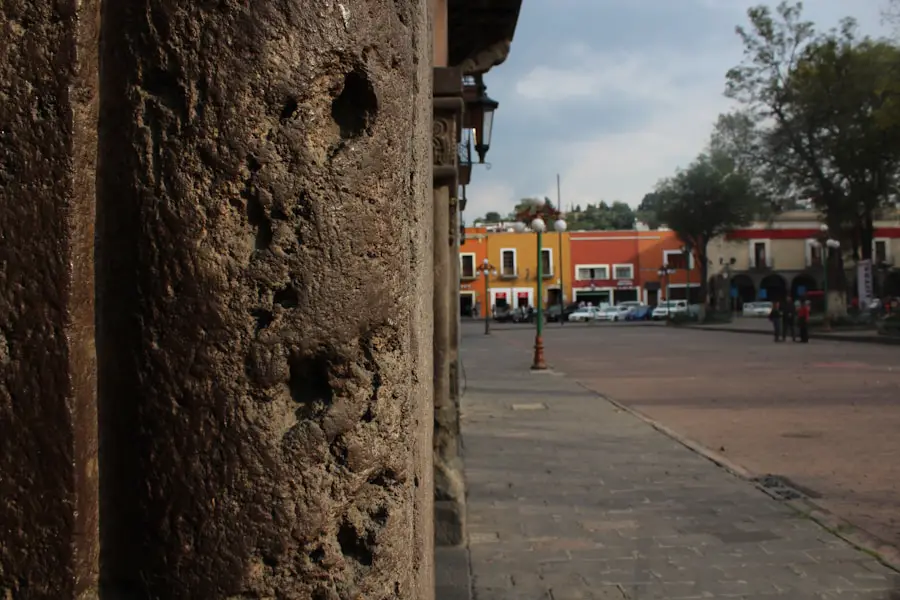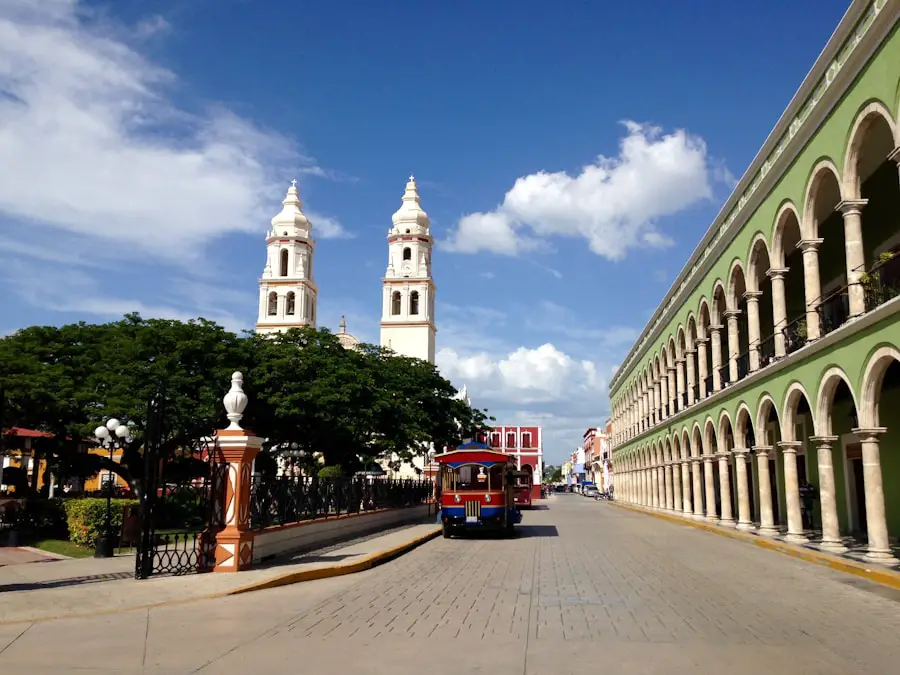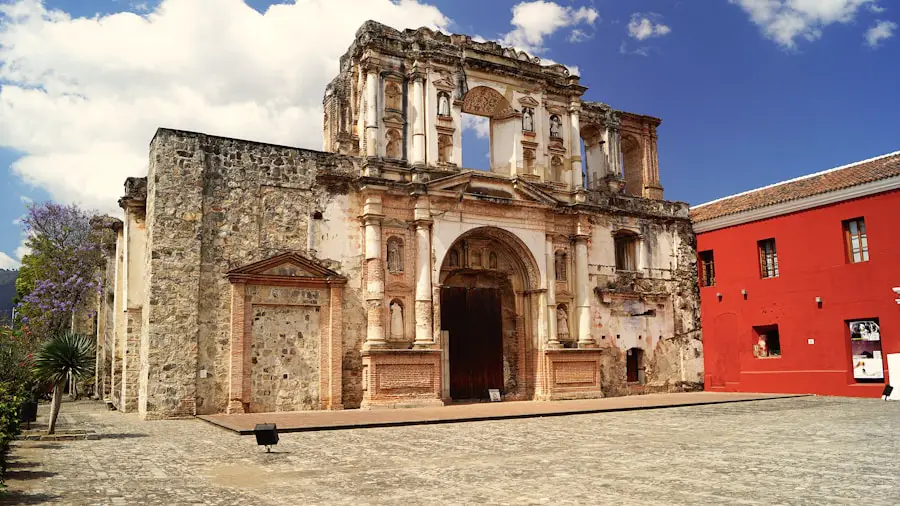Spring in Tasmania is a season that bursts forth with vibrant colors and fragrant blooms, transforming the landscape into a picturesque wonderland. As the days grow longer and temperatures begin to rise, the island’s gardens and parks come alive with a riot of flowers. The famous tulip festival in Table Cape is a highlight, where fields of tulips stretch as far as the eye can see, showcasing a dazzling array of colors.
Visitors flock to this event not only to admire the flowers but also to participate in local markets, enjoy live music, and indulge in delicious food stalls that celebrate the region’s culinary offerings. In addition to the floral displays, spring is also a time for wildlife activity. Many animals emerge from hibernation, and migratory birds return to the island, filling the air with their songs.
The Tasmanian devil, an iconic species of the island, can often be spotted more frequently during this time as they become more active. Nature reserves and national parks, such as Freycinet National Park and Mount Field National Park, offer excellent opportunities for visitors to witness this seasonal awakening. Hiking trails are adorned with wildflowers, and the crisp air is invigorating, making it an ideal time for outdoor exploration.
Key Takeaways
- Spring in Tasmania: A Blooming Wonderland
- Spring in Tasmania offers a stunning display of wildflowers and blossoming gardens, making it the perfect time for nature lovers and photographers.
- The mild weather and longer daylight hours in spring create ideal conditions for outdoor activities such as hiking and wildlife spotting.
- Summer in Tasmania: Outdoor Adventures and Festivals
- Summer in Tasmania is the best time for outdoor enthusiasts, with opportunities for hiking, camping, and water sports in the pristine wilderness.
- The season also brings a vibrant festival scene, with events celebrating music, food, and local culture, making it a great time for visitors to immerse themselves in the island’s lively atmosphere.
- Autumn in Tasmania: Foliage and Wine Tasting
- Autumn in Tasmania is a feast for the eyes, with the landscape transforming into a kaleidoscope of red, orange, and gold as the foliage changes color.
- This season is also perfect for wine enthusiasts, as it is the time for grape harvest and wine tasting tours at the island’s renowned vineyards.
- Winter in Tasmania: Cozy Retreats and Wildlife Watching
- Winter in Tasmania offers a cozy retreat for travelers, with the opportunity to enjoy the island’s charming accommodations and indulge in hearty local cuisine.
- Wildlife watching is also a highlight in winter, with the chance to spot unique animals such as wombats, wallabies, and Tasmanian devils in their natural habitat.
- Best Time for Hiking in Tasmania: Exploring the Wilderness
- The best time for hiking in Tasmania is during the spring and summer months, when the weather is mild and the trails are at their most picturesque.
- Visitors can explore a variety of hiking trails, from coastal walks with stunning ocean views to challenging mountain treks in the island’s rugged interior.
- Best Time for Wildlife Watching in Tasmania: Spotting Unique Animals
- The best time for wildlife watching in Tasmania is during the winter months, when animals are more active and easier to spot against the backdrop of the snow-covered landscape.
- From penguins and seals along the coast to elusive Tasmanian devils in the wilderness, winter offers ample opportunities for unforgettable wildlife encounters.
- Best Time for Food and Wine in Tasmania: Culinary Delights and Vineyard Tours
- The best time for food and wine in Tasmania is during the autumn months, when the island’s vineyards come alive with the grape harvest and wine tasting events.
- Visitors can also indulge in the island’s renowned culinary scene, with an abundance of fresh local produce and seafood available at this time of year.
- Best Time for Festivals and Events in Tasmania: Celebrating Local Culture
- The best time for festivals and events in Tasmania is during the summer months, when the island comes alive with a diverse range of cultural celebrations and entertainment.
- From music and arts festivals to food and wine events, summer offers a vibrant and festive atmosphere for visitors to experience the best of Tasmania’s local culture.
Summer in Tasmania: Outdoor Adventures and Festivals
Discover Tasmania’s Coastal Wonders
The Bay of Fires, renowned for its crystal-clear waters and striking orange lichen-covered rocks, is a popular destination for beachgoers and water sports enthusiasts. Kayaking along the coastline allows for an intimate experience with the marine life that thrives in these waters.
A Season of Festivals and Celebrations
Summer is also a time for vibrant festivals that showcase Tasmania’s rich culture and community spirit. The Taste of Tasmania festival, held in Hobart, is a gastronomic celebration that features local produce, wines, and craft beers. Visitors can sample everything from fresh seafood to artisanal cheeses while enjoying live music and entertainment.
Celebrating Community and Culture
Another notable event is the Festival of Voices, which brings together singers from all over Australia for a series of performances and workshops. These festivals not only highlight the island’s culinary and artistic talents but also foster a sense of community among residents and visitors.
Autumn in Tasmania: Foliage and Wine Tasting

As summer fades into autumn, Tasmania transforms into a canvas of warm hues—golden yellows, fiery reds, and deep oranges dominate the landscape. This season is particularly enchanting in regions like the Tamar Valley and Huon Valley, where vineyards are abundant. Autumn is harvest time for many wineries, making it an ideal period for wine tasting tours.
Visitors can explore renowned vineyards such as Josef Chromy Wines or Pipers Brook Vineyard, where they can sample exquisite Pinot Noir and Chardonnay while soaking in breathtaking views of rolling hills adorned with autumn foliage. The changing colors of the leaves create a stunning backdrop for outdoor activities such as hiking and cycling. The Overland Track, one of Tasmania’s most famous hiking trails, offers breathtaking views of the surrounding wilderness as it winds through forests that are ablaze with autumn colors.
Additionally, many towns host harvest festivals during this time, celebrating local produce with food stalls, live music, and family-friendly activities. These events provide an opportunity for visitors to engage with local farmers and artisans while enjoying the bountiful flavors of Tasmania’s autumn harvest.
Winter in Tasmania: Cozy Retreats and Wildlife Watching
| Activity | Location | Temperature | Accommodation Cost |
|---|---|---|---|
| Wildlife Watching | Cradle Mountain-Lake St Clair National Park | 5°C – 10°C | 150 – 300 per night |
| Cozy Retreats | Hobart | 8°C – 15°C | 100 – 250 per night |
| Winter Festivals | Launceston | 6°C – 12°C | 80 – 200 per night |
Winter in Tasmania brings a unique charm characterized by its cool temperatures and serene landscapes. While many may think of winter as a time to retreat indoors, Tasmania offers a plethora of opportunities for cozy getaways and wildlife watching. The island’s diverse ecosystems provide habitats for various species that are particularly active during the colder months.
For instance, visitors can embark on guided tours to see the elusive Tasmanian devil in its natural habitat or spot wombats and wallabies that are more visible against the stark winter backdrop. Cozy retreats abound in Tasmania during winter, with many accommodations offering warm fireplaces and stunning views of snow-capped mountains or tranquil lakes. The town of Cradle Mountain is a popular destination for those seeking both relaxation and adventure.
Visitors can enjoy scenic walks through snow-dusted landscapes or indulge in spa treatments at local lodges. Additionally, winter festivals such as Dark Mofo in Hobart celebrate the season with art installations, music performances, and feasts that highlight local produce. This festival not only embraces the winter solstice but also showcases Tasmania’s vibrant arts scene.
Best Time for Hiking in Tasmania: Exploring the Wilderness
Hiking enthusiasts will find that Tasmania offers some of the best trekking experiences in Australia, with its diverse landscapes ranging from rugged mountains to lush rainforests. The best time for hiking largely depends on personal preferences regarding weather conditions and trail accessibility. Spring (September to November) is ideal for those who enjoy mild temperatures and blooming wildflowers along the trails.
Popular hikes like the Three Capes Track offer stunning coastal views framed by vibrant flora during this season. Summer (December to February) is another excellent time for hiking, particularly for those who prefer warmer weather and longer daylight hours. The Overland Track is a must-do for serious hikers; it traverses through some of Tasmania’s most breathtaking scenery over six days.
However, it’s essential to book ahead during peak season due to its popularity. Autumn (March to May) presents another opportunity for hikers to experience stunning foliage while enjoying cooler temperatures that make long treks more comfortable. Trails like Mount Wellington provide panoramic views of Hobart surrounded by vibrant autumn colors.
Best Time for Wildlife Watching in Tasmania: Spotting Unique Animals

Spotting Tasmanian Devils
For those eager to see Tasmanian devils in their natural habitat, late spring through early autumn (November to April) is ideal when these nocturnal creatures are more active during warmer nights. Wildlife parks such as Bonorong Wildlife Sanctuary offer guided tours where visitors can learn about conservation efforts while observing these fascinating animals up close.
Birdwatching in Tasmania
Birdwatchers will find that spring is particularly rewarding as migratory birds return to Tasmania’s shores. The island’s diverse ecosystems provide habitats for various species including the endangered orange-bellied parrot and the swift parrot. National parks like Freycinet and Maria Island are prime locations for birdwatching enthusiasts looking to spot these rare species amidst stunning coastal scenery.
Whale Watching in Tasmania
Additionally, winter months (June to August) present opportunities to see whales migrating along the coast as they travel northward; guided boat tours offer an unforgettable experience for those wishing to witness these majestic creatures.
Best Time for Food and Wine in Tasmania: Culinary Delights and Vineyard Tours
Tasmania has earned a reputation as a culinary haven thanks to its pristine environment that produces high-quality ingredients. The best time for food and wine experiences aligns closely with the seasons—each offering unique flavors influenced by local harvests. Summer (December to February) is particularly vibrant as farmers’ markets flourish with fresh produce including berries, cherries, and vegetables.
This season also marks the peak of seafood availability; visitors can indulge in freshly caught oysters or participate in food festivals celebrating local cuisine. Autumn (March to May) is another exceptional time for food lovers as it coincides with grape harvest season in vineyards across regions like Tamar Valley and Huon Valley. Wine tours during this period allow visitors to sample award-winning wines while enjoying picturesque vineyard landscapes adorned with autumn colors.
Many wineries host special events such as harvest festivals where guests can partake in grape stomping or enjoy gourmet meals prepared by local chefs using seasonal ingredients. These culinary experiences not only highlight Tasmania’s rich agricultural heritage but also foster connections between visitors and local producers.
Best Time for Festivals and Events in Tasmania: Celebrating Local Culture
Tasmania’s cultural calendar is brimming with festivals that celebrate its rich heritage, arts scene, and community spirit throughout the year. The best time to experience these events varies by season but each offers unique insights into Tasmanian culture. Summer (December to February) hosts some of the most popular festivals including the Taste of Tasmania which showcases local food and beverages alongside live entertainment—a true celebration of Tasmanian flavors.
Autumn (March to May) features events like the Tasmanian Craft Fair held in Deloraine where artisans display their handmade goods ranging from pottery to textiles. This festival not only supports local artists but also provides visitors with an opportunity to engage directly with creators while discovering unique souvenirs. Winter brings forth Dark Mofo—a festival that embraces art installations, music performances, and culinary experiences centered around winter solstice celebrations; it’s an immersive experience that highlights Tasmania’s contemporary arts scene.
Each season offers distinct opportunities to engage with local culture through festivals that reflect the island’s diverse community spirit while showcasing its natural beauty and culinary delights. Whether it’s savoring fresh produce at summer markets or experiencing winter festivities under starry skies—Tasmania’s events create lasting memories for all who partake in them.
If you’re planning a trip to Tasmania, you’ll want to make sure you have all the right gear, including a reliable travel fishing pole. Check out this article on the best travel fishing poles to ensure you’re prepared for any fishing adventures during your visit. Additionally, having a minimalist travel backpack can make exploring the beautiful landscapes of Tasmania much easier. Take a look at this list of must-have minimalist travel backpacks for your spring adventures. And don’t forget to pack a reliable travel toothbrush to keep your oral hygiene in check while on the road. Check out this article on the best travel toothbrushes to find the perfect one for your trip to Tasmania.
FAQs
What is the best time to travel to Tasmania?
The best time to travel to Tasmania is during the summer months of December to February when the weather is warm and the days are long.
What is the weather like in Tasmania during the best time to travel?
During the summer months, Tasmania experiences mild and pleasant weather with average temperatures ranging from 17°C to 23°C.
Are there any specific events or festivals during the best time to travel to Tasmania?
Yes, Tasmania hosts various events and festivals during the summer months including the Taste of Tasmania food festival, the Sydney to Hobart Yacht Race, and the Falls Festival.
What are the popular outdoor activities to do in Tasmania during the best time to travel?
During the summer, visitors can enjoy outdoor activities such as hiking in the national parks, exploring the beaches, wildlife spotting, and visiting the famous Wineglass Bay.
Is it necessary to book accommodation in advance during the best time to travel to Tasmania?
Yes, it is recommended to book accommodation in advance as the summer months are the peak tourist season in Tasmania and accommodations tend to fill up quickly.
